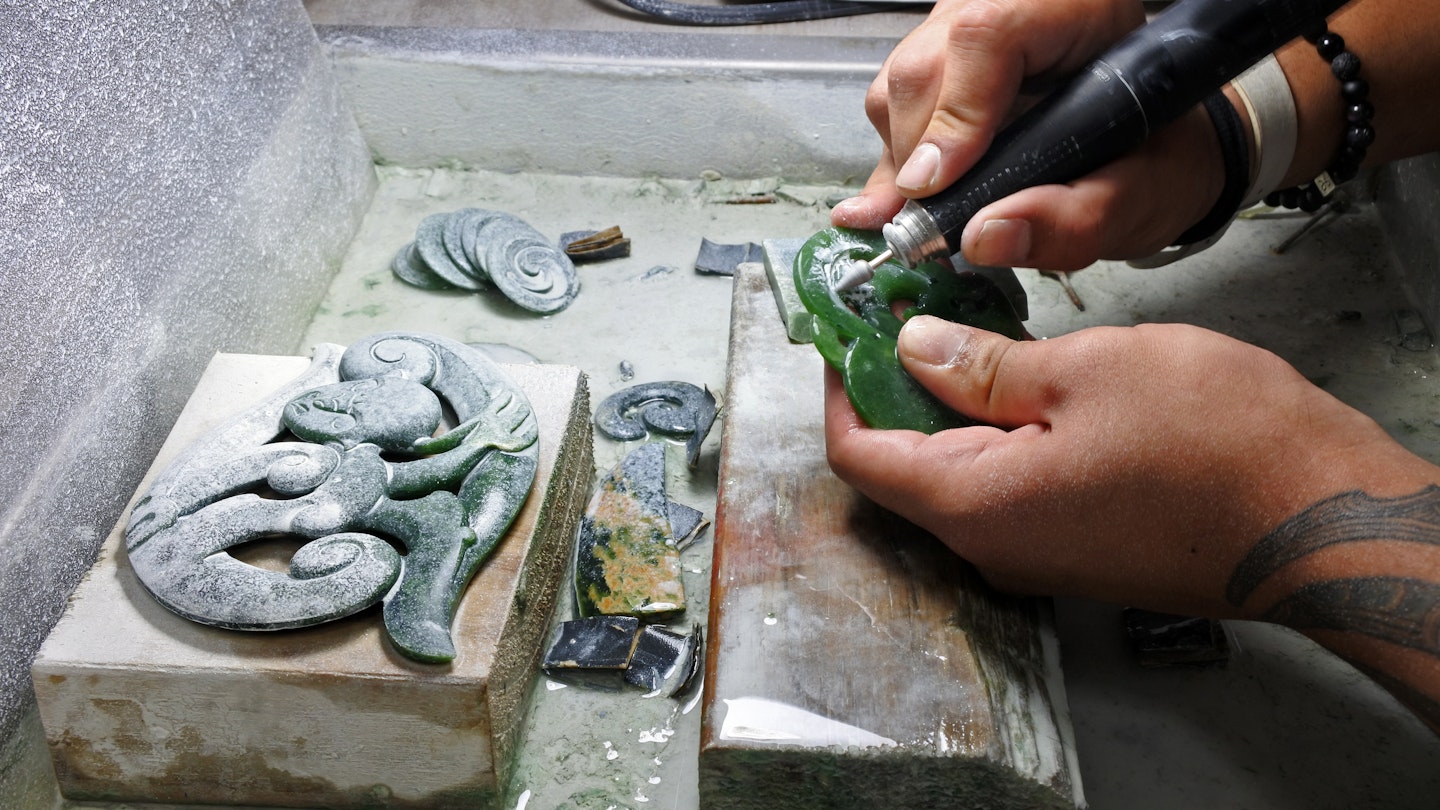Pounamu: The Essence of Greenstone in New Zealand
As soon as you arrive in New Zealand, you’ll notice the greenstone (pounamu in Māori) pendants often attached to leather necklaces, adorning both locals and tourists.
These pendants are among the most popular souvenirs here, making it almost essential for visitors to acquire one and wear it with pride as they traverse the country. However, a closer look reveals that not all pounamu pieces are the same.
My experience began as a teenager when my father, who is a New Zealander, gifted me a pounamu hei-tiki after his trip home. Initially, I didn’t realize its significance beyond its iconic Māori design. It felt wonderful in my hands, and I wore it on a leather necklace for years, capturing a memory in my first adult passport photo.
Later, I learned that the tiki symbolizes fertility, becoming even more meaningful when my family sought to welcome a child. Such connections illustrate the cultural depth and personal significance that pounamu can embody.
Understanding the Differences: Greenstone, Jade, and Pounamu
Greenstone, also known as jade, is a semiprecious gemstone that varies in color from light green to deep emerald. It is important to note that jadeite and nephrite are the two distinct minerals referred to as “jade,” with nephrite being more common and less valuable.
This durable stone can be crafted into numerous objects, ranging from tools to jewelry, and in many cultures, it’s believed to possess healing properties.
Pounamu, unique to New Zealand, originates specifically from the west coast of the South Island, home to the Ngāi Tahu community. In 1997, the New Zealand government recognized the ownership and guardianship rights for pounamu, returning them to the Te Rūnanga o Ngāi Tahu, the elected tribal council.
Consequently, the Ngāi Tahu iwi is responsible for sustainably managing New Zealand’s pounamu, ensuring that the rivers it comes from, like the Arahura River, are protected and preserved.
Evaluating the Cost of Pounamu
As with any gemstone, the value of pounamu is influenced by its aesthetic quality and rarity. Māori customs categorize pounamu based on its color, markings, and translucency, with four main varieties: inanga, kahurangi, kawakawa, and tangiwai.
Kahurangi pounamu is the rarest, known for its translucency and flawlessness, while inanga, recognized by its opaque grey-green hue, takes its name from a local freshwater fish. Tangiwai is more translucent, yet fragile, making it challenging to work with. Conversely, kawakawa is more common and varies greatly in green hues.
Ensuring Authenticity in Your Pounamu Purchase
Travelers often face a price disparity between imported greenstone and authentic New Zealand pounamu. Some lower-priced pounamu sold in souvenir stores may have been carved in New Zealand yet utilize raw materials sourced overseas. Other cheaper items may be mass-produced and falsely marketed as local products.
To support traditional craftspeople while ensuring a genuine spiritual connection to Māori culture, consider setting aside additional funds for authentic pounamu, which typically ranges from NZ$100 to NZ$600 based on the sophistication of the design and stone quality.
Look for items with Ngāi Tahu authentication, as it not only signifies quality but also offers insight into the stone’s genealogy and the artist behind it. For an enriched experience, visit artisan studios on the South Island to connect with the craftsmen directly.
Understanding Pounamu Carving Styles
Moreover, the Ngāi Tahu iwi values both the environmental impact and the rich cultural traditions associated with pounamu carving. Craftspeople, such as Lee-Roy Mullings from Ngāti Kahungunu iwi, emphasize the spiritual connection they forge with the stone before initiating the carving process.
Meanings Behind the Main Pounamu Pendant Designs
Visitors can encounter four primary designs across New Zealand, each with its own significance:
- Toki: A tool for cutting, symbolizing wisdom, strength, and determination.
- Koru: Represents new beginnings, growth, and hope, resembling an unfurling fern.
- Hei Matau: The fishhook design represents a connection to the ocean and is believed to bring good luck and safe travels.
- Hei-tiki: Often seen as a fertility symbol, its meaning can vary depending on context.
Searching for Pounamu in the Wild
While anyone can search for pounamu pebbles along the West Coast of the South Island, hunting for this gemstone in its rivers is prohibited.
Unfortunately, the rise in pounamu’s value has led to an increase in illegal collection from remote areas—a troubling issue for the Ngāi Tahu community, both spiritually and economically.
For a deeper insight into the significance of pounamu, consider joining a “fossicking” tour with registered Ngāi Tahu guides, or inquire about courses to carve your own pounamu, bone, or shell. When you ensure you’re purchasing an authentic piece of pounamu, you support the Māori cultural heritage while taking home a meaningful souvenir from your travels.





